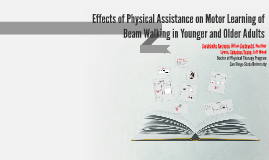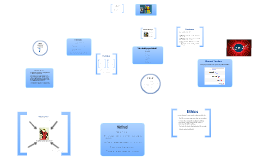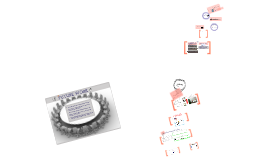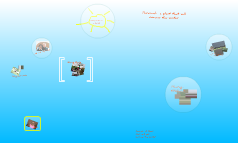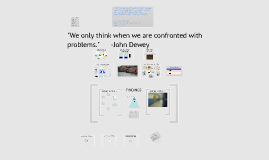Longo Doctoral Dissertation
Transcript: Dissertation Committee Members Primary Advisor Marcia A. B. Delcourt, PhD Secondary Advisors Janice M. Jordan, PhD Jacob Greenwood, EdD Reader Julia Ferreira, EdD Program Coordinator Marcia A. B. Delcourt, PhD Research Question 2 To what extent and in what manner do critical thinking skills, science process skills, creativity, and program type predict science fair achievement? Small, suburban community of approximately 18,000 Median income: $74,000 Increased diversity over the past 12 years, however predominantly White population Middle school of 690 students Grades 6, 7, and 8 Instrumentation A Perspective on Creativity: Do we, as educators, "teach" creativity? 46 RESEARCH QUESTION 2 CPS Model (Treffinger &Isaksen, 1985) 42 8 52 23 4 Inquiry: a process “driven by the student’s own curiosity, wonder, interest, or passion to understand an observation or solve a problem” (Manconi, Aulls, & Shore, 2008, p. 249). Direct instruction Critical thinking Creative thinking Limitations INTRODUCTION 21 32 Methodology: Treatment characteristics slide 26 Data Screening Visual inspection Multivariate outliers (8) identified and removed (+/- 2 standard deviations) Pretest Descriptive Statistics No significant difference across all variables REVIEW OF THE LITERATURE 5 13 14 25 38 Statistical Assumptions - Posttests Normality (Skewness, Kurtosis) Linearity (Scatterplots/Histograms) Homoscedasticity (Box’s M) Equal variances across groups (Levene’s) Correlation matrix Multicollinearity considerations Connecticut Science Fair Rubric (CSF, 2006) Established validity & reliability Assesses science fair achievement based on four components: Scientific thought Creative ability Thoroughness Skill Clarity Inter-rater reliability established in this study Two raters: Cronbach’s alpha = .941 Three raters: Cronbach’s alpha = .965 Findings: Research Question 1 Posttest Descriptive Statistics 50 15 The Need for Middle School Inquiry Research 40 Treatment Timeline 49 IMPLICATIONS 35 A multivariate analysis of variance (MANOVA) was implemented and interval data were analyzed to determine if there is a difference in student critical thinking skills, science process skills, and creativity between students in inquiry-based instruction and direct instruction classrooms Independent variable: Program Type with 2 levels Dependent variables: 7 Bonferronni correction: alpha level set at .025 slide 39 LIMITATIONS Implications for Future Research 48 31 Torrance, 1972 Multiple Linear Regression for Model 2 Multiple R was significant for the second block, F(1, 170) = 4.212, p < .001 Within this model, science process skills (p < .025) contributed significantly to the prediction of science fair achievement KEY FINDING: Program type contributed significantly to the prediction of science fair achievement scores above and beyond the other predictor variables associated with model 1, predicting 16.5% of the variance in science fair project scores in model 2 3 Methodology Data and Findings Research Question 1 Data and Findings Research Question 2 Daddy promised me one "slide" INQUIRY INSTRUCTION California Measure of Mental Motivation (CM3) (Giancarlo, 2010) A measure of critical thinking Established validity & reliability 4-point Likert-type Five scales Pretest and Posttest 28 Data and Findings Research Question 1 Rationale Findings Research Question 1 Step 1: Identify or create a puzzling situation. Step 2: Gather information about the topic by asking “Yes/No” questions related to your puzzling situation or dilemma. Document your findings. Step 3: Develop a hypothesis based on your information. Step 4: Organize the data (evidence) and formulate an explanation for the puzzle. Be prepared to defend this explanation. Step 5: Analyze your inquiry process and propose improvements. Step 6: Create five more puzzling situations that can be investigated. <--- Convergent Thinking ---> Data and Findings Research Question 2 Instrumentation Suchman Inquiry Example Review of the Literature "We only think when we are confronted with problems." -John Dewey Follow-up analysis 1 INSTRUMENTATION 51 Instrumentation 29 Science Curriculum Science fair process Lab activities based upon state science inquiry standards Creative and Critical Thinking Skills Creative Problem Solving (CPS) Model (Treffinger & Isaksen, 1985) Suchman Inquiry Model (Suchman, 1968) Methodology: Description of the Setting EFFECTS OF AN INQUIRY-BASED SCIENCE PROGRAM ON CRITICAL THINKING SKILLS, SCIENCE PROCESS SKILLS, CREATIVITY, AND SCIENCE FAIR ACHIEVEMENT OF MIDDLE SCHOOL STUDENTS Christopher M. Longo Western Connecticut State University March 10, 2012 Development of instruction that stimulates students to brainstorm effectively Development of skills needed to understand how to conduct scientific investigations Production of more authentic and meaningful products, such as labs and science fair projects Exploration of meaningful content by discovering knowledge using limited assistance Review of the







